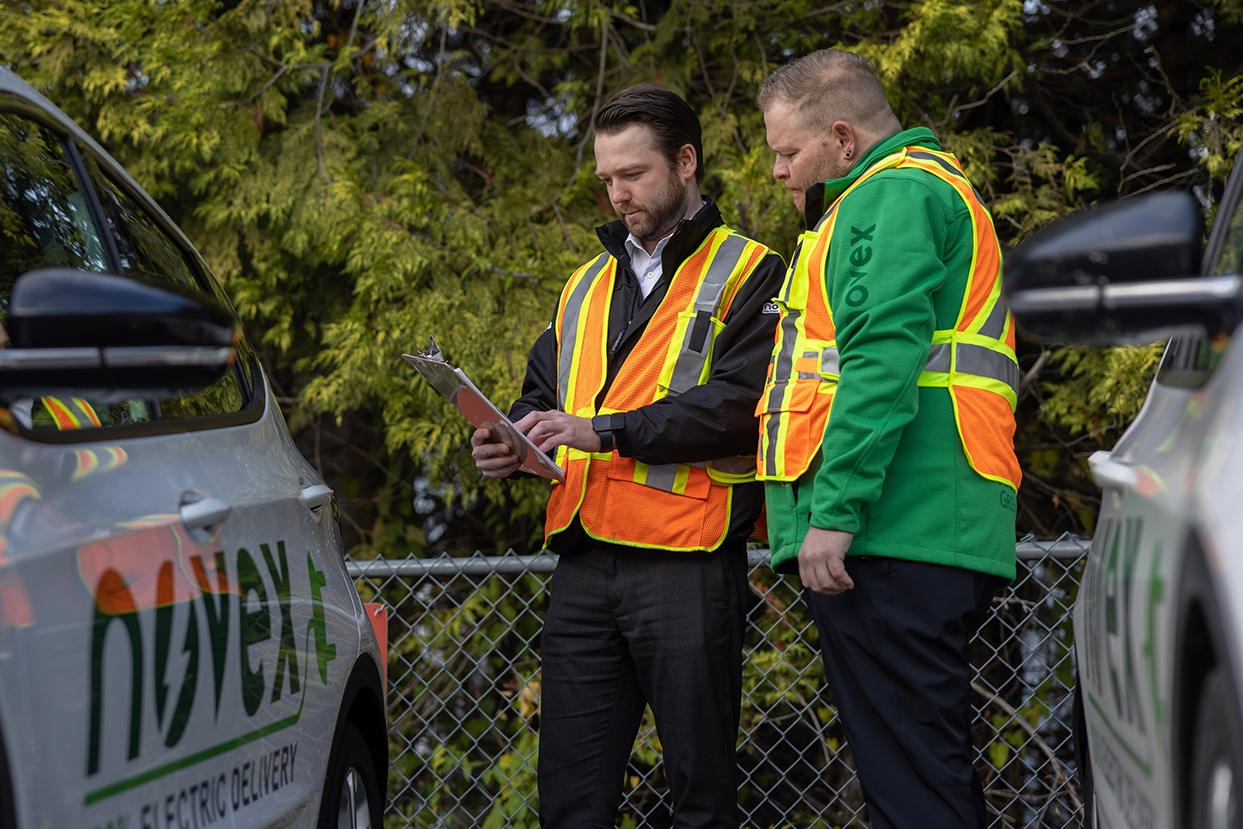Delivering safety to drivers in the courier industry
The past few years have seen couriers emerge among the heroes of the COVID-19 pandemic, getting deliveries where they need to go in the face of numerous and ever-changing hazards.
By Susan Kerschbaumer
During this time, couriers had to adopt new protocols, such as keeping their distance at the door and offering contactless deliveries — all while dealing with a growing volume of packages.
Angela Roscoe, operations support for Novex Delivery Solutions, recalls how they suddenly found themselves overwhelmed with work: taking COVID samples to the labs, delivering paperwork to staff of companies who had quickly shifted to working from home — even bringing Christmas dinners to employees who would normally have been celebrating together at their annual company holiday parties. Add to this the huge uptick in online grocery orders, the endless stream of eat-at-home restaurant meals, and the shift toward virtual shopping, and it’s no surprise that the delivery industry, which had seen rapid growth even before the pandemic, sped up to an accelerated pace.
Business has grown — and so has the number of injuries
This heightened pace led to more workers entering the industry. And along with the increase in workers has come a corresponding increase in injuries. Over the past three years, in fact, the number of WorkSafeBC claims in the industry has risen 30 percent.
Even before the pandemic, on-the-job injuries — mostly of the musculoskeletal variety — were becoming a more serious concern. “We were looking at the industry right before COVID hit,” says WorkSafeBC occupational health and safety consultant Jacqueline Morrison, adding that food delivery and last mile delivery (distribution from a central warehouse to the consumer) were seeing a lot of growth and the injury rate was growing along with it. “Then COVID happened and our focus on couriers became even more timely.”
Videos help bring awareness to the hazards
Morrison and her team began work on three videos to address health and safety concerns in the industry. The Safety With Every Step series, released this summer, brings awareness to the top workplace hazards as identified by claims statistics and delivery drivers themselves. Each of the videos looks at a specific type of courier service — food delivery, last mile delivery, and commercial delivery — and shows workers how to spot hazards and take steps to avoid harm.
Some safety measures apply to all three types of courier service. Whether they’re delivering office supplies or dropping off burgers and fries, for example, couriers who operate motor vehicles can stay safer by wearing a seatbelt and securing packages so they don’t shift during transit. When travelling on foot, all couriers potentially face tricky stairways, slippery floors, dangerous traffic, or heavy loads — and they can all protect themselves by using handrails, wearing slip-resistant footwear, taking crosswalks, and making use of a handcart.
The videos also point to the dangers specific to each of the three courier types. Commercial delivery workers spend time in loading bays, where being visible is critical, and manoeuvring around moving vehicles, where making eye contact with drivers can be lifesaving. Food delivery workers must be especially mindful of unruly dogs and poorly lit walkways; for them, awareness of their surroundings and good visibility are key. Last mile delivery workers are in and out of workplaces and vehicles; they need to leave space for others when stepping into elevators and follow proper procedures when entering buildings.
Changing conditions bring changing hazards
Regardless of the type of delivery, hazards are always present and constantly changing. Even the same delivery to the same location can be different from one day to the next. Assessing changing conditions — everything from weather to traffic to the size of packages — and evaluating the risks they pose is crucial to staying safe.
The key to identifying these fluctuating hazards, says Morrison, is engaging workers in the safety conversation. “Workers see how the job is changing before anyone else,” she says. It’s important for employers to talk to their workers, ask what they’re seeing, and encourage them to share their own solutions to dealing with the hazards they encounter.
Ideally, controlling hazards becomes part of the regular conversations that workers have with each other during their workday. For Roscoe, who manages more than 100 drivers, communication takes a number of forms, from the company newsletter to fleet-wide emails to driver-specific printed notes and texts about individual deliveries. At Novex, the safety conversation begins during the onboarding process for new drivers and is strong, clear, and ongoing. Sometimes the message is about how to deal with a complex material like dry ice; other times, it’s how to safely navigate a path through skateboards and toys littering a family’s front walk.
“A lot of times, highly effective changes can be very simple,” says Morrison, adding that communicating improves everyone’s safety. “If you have information, share it with everybody. You might have a good idea, and by having that conversation, you can make it safer.”
This information originally appeared in the November/December 2022 issue of WorkSafe Magazine. To read more or to subscribe, visit WorkSafe Magazine.

